Persian (Iranian) rhinoplasty is a very common type of Middle Eastern cosmetic nose surgery performed in my practice. In fact, I would say that Persian (Iranian) patients make up a significant portion of my ethnic rhinoplasty patient population. This should not really be surprising, however, since Iran is widely considered by many insiders to be the rhinoplasty capital of the world – making nose job surgery quite acceptable within the Persian culture. Presented here is an excellent example of cosmetic rhinoplasty in a very pleasant Persian lady who was looking to address certain features of her nose she simply did not like.
Persian (Iranian) Rhinoplasty Presentation
This patient’s main desire, like many Persian (Iranian) rhinoplasty patients, was to have a nose that looked ‘smaller’ and more defined. On her frontal view, you can see that her nose was really not too bad in terms of overall balance and harmony with her surrounding facial features – especially for an ethnic nose. Perhaps it was a bit wide along the bridge. But, overall, not bad. As you begin to see her oblique and side views, the bridge of the nose now becomes a little more obvious in terms of having excess height. This is seen in combination with the fact her nasal tip is droopy. This drooping is even more noted when she smiles as can be readily seen in her preoperative rhinoplasty photo series.

Persian (Iranian) Rhinoplasty Skin Thickness
One major factor in this case that is not readily appreciate in the photos is her skin thickness. In most Persian (Iranian) rhinoplasty patients, the skin thickness is a very important consideration, particularly when dealing with planned tip reshaping. This is because thick skin does not readily shrink down in size compared to thinner skin. In many Persian (Iranian) rhinoplasty patients, the desire is to make the nose look smaller – especially in the region of the tip. If the cartilage framework of the tip is reduced considerably in size in an attempt to make the nose look smaller, the thick skin will often times not shrink down to match the new smaller framework. If this occurs, the skin will actually appear amorphous, or without shape – making the nasal tip look even less defined than it was to start.
Larger to Look Smaller?
So what do you do in Persian (Iranian) patients to make the nasal tip look smaller? In many cases of Persian (Iranian) rhinoplasty you actually have to make the nose physically larger to appear smaller. Whenever I broach this topic with potential rhinoplasty patients, they invariably give me the same response – ‘… but Dr. Hilinski I don’t want my nose to be any bigger’ – which is completely understandable if you do not grasp this concept. But the reality is that in many cases of Persian rhinoplasty, the cartilage framework of the nasal tip has to be made larger in order to provide a more defined, smaller looking nose. By adding cartilage to the nasal tip in the form of grafts, the thicker than average skin can be ‘pushed’ out to make the tip appear more narrow – or visually smaller. That is precisely what was done in this particular case as cartilage was taken from inside of her nose (from the septum) and used to graft the nasal tip region to provide her with a more defined nasal tip.
Persian Rhinoplasty Reshaping
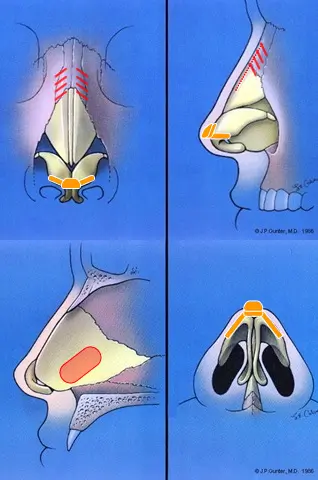
In addition to reshaping her nasal tip to provide a more defined look, I ended up lifting her nasal tip (also referred to as rotating the tip) to address the drooping effect. For her excess upper bridge height, I performed a reduction of this area using rasping techniques, or sanding.
These type of changes to her nasal tip and bridge can be seen diagrammatically in the adjacent rhinoplasty diagram.
Persian (Iranian) Rhinoplasty Columella Scar
The entire surgery was done using what is called an open rhinoplasty approach where an incision is made across the columella (the column of tissue that separates the right and left nostrils). In my humble opinion, this type of rhinoplasty technique provides a huge benefit in terms of visualization versus doing a closed rhinoplasty approach – especially when dealing with such tip reshaping surgery. Many rhinoplasty patients concern themselves about this incision because, after all, no one really wants to have visible scarring. Fortunately, in most cases this open rhinoplasty scar is barely visible from several feet away. The actual healed scar from this current case example of Persian rhinoplasty is shown here. On the left side is the actual incision made during the surgery as is shown by the red marking. On the right is the well-healed post-rhinoplasty scar. As you can see for yourself, the scarring is quite acceptable and should not be considered a huge deterrent to undergoing an open cosmetic rhinoplasty procedure.
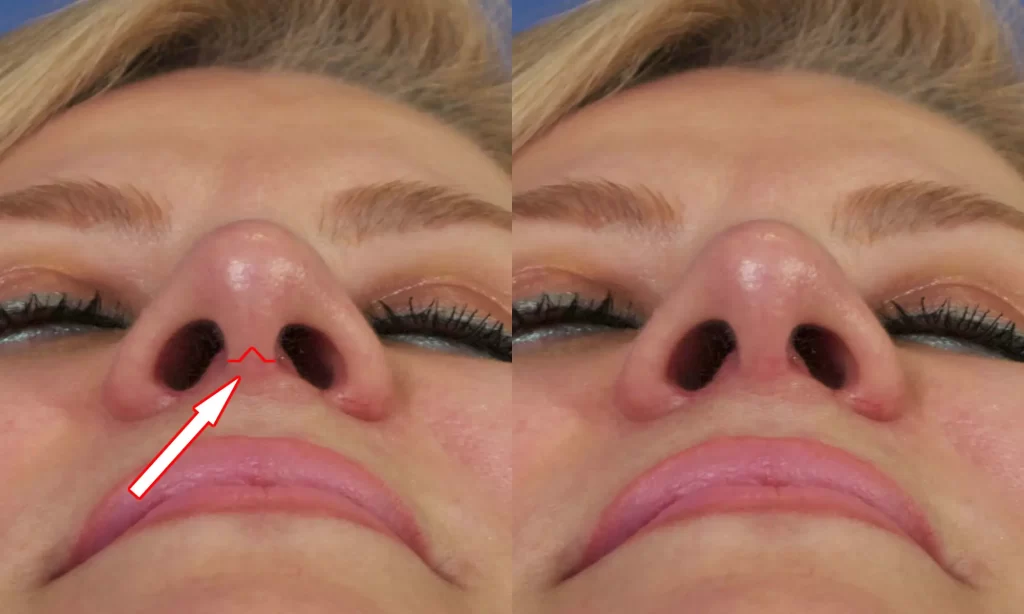
Persian (Iranian) Nosejob Results
Shown here are the before and after rhinoplasty photos of this particular patient. As you can see from her frontal view, there is a noted improvement in terms of her nasal tip with a more refined look that can be seen following rhinoplasty. As you begin to look at her oblique and side views, you can also appreciate how the nasal tip has been brought up a bit to get rid of the appearance of a drooping nasal tip. Now when she smiles (as shown), her nasal tip remains quite stable in its position. On the side view you can also see how the upper portion of her nasal bridge has now been reduced in height to give a more feminine overall look with a smoother contour. But the most important thing is that her nose still looks quite natural on her face and does not appear as if it was surgically altered.
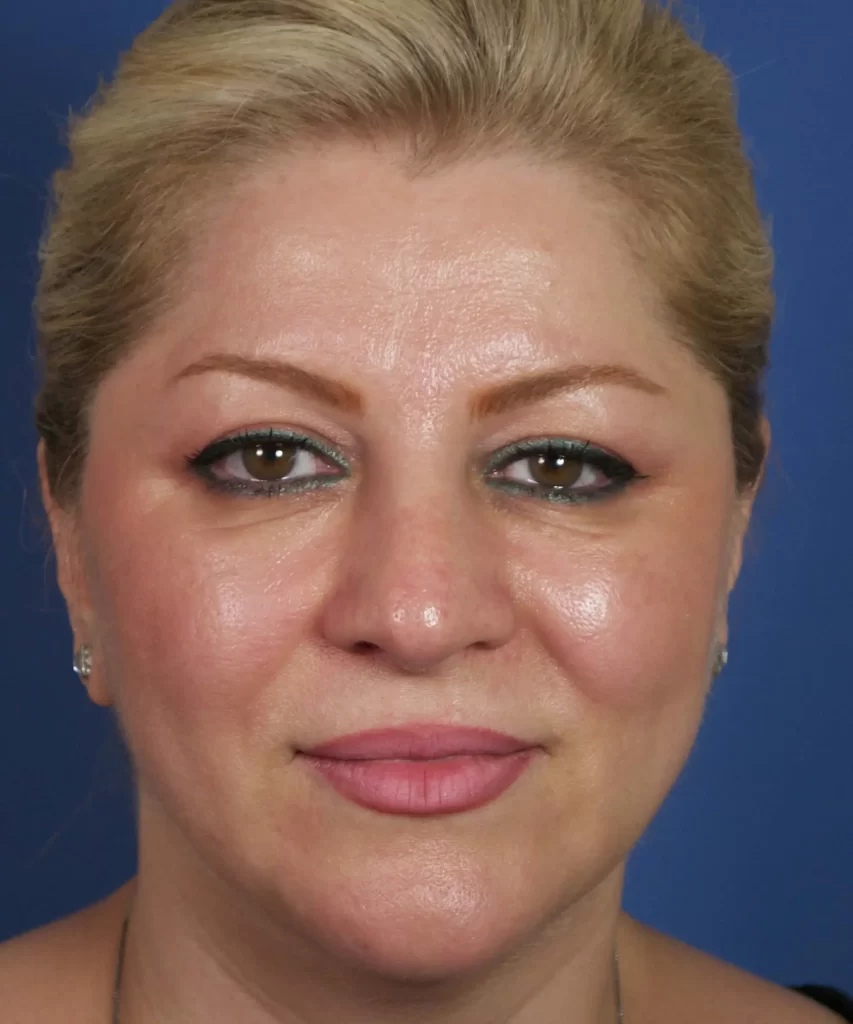
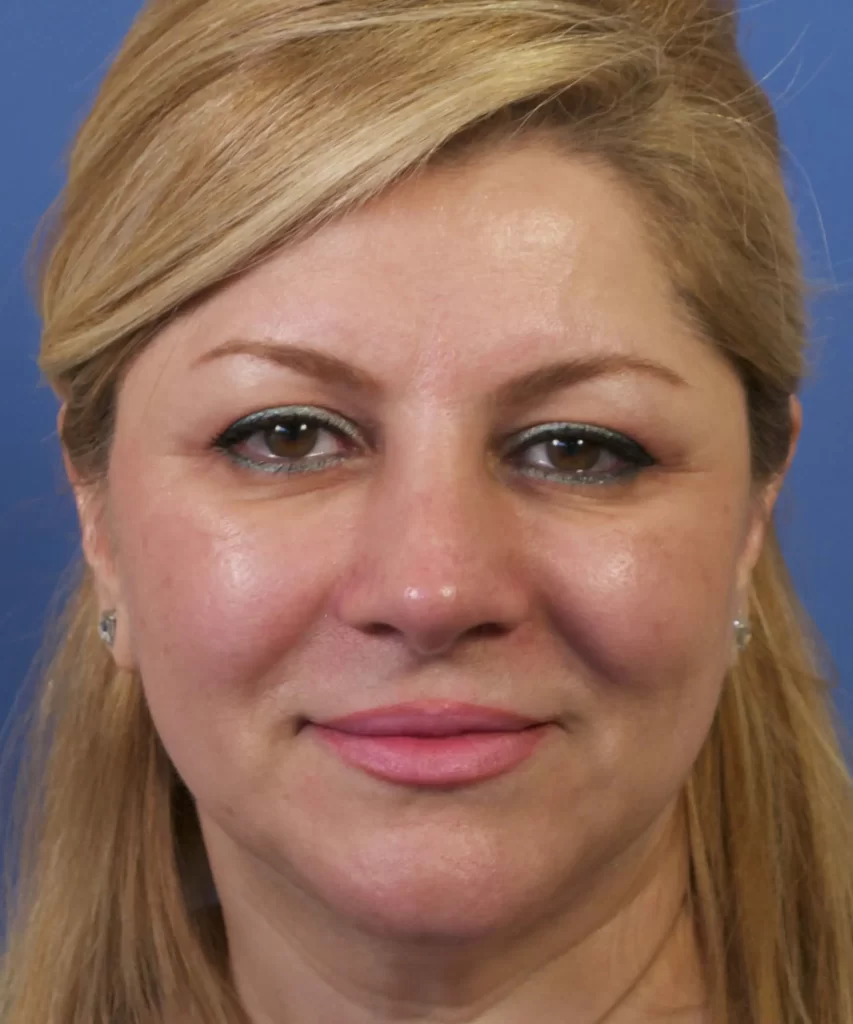
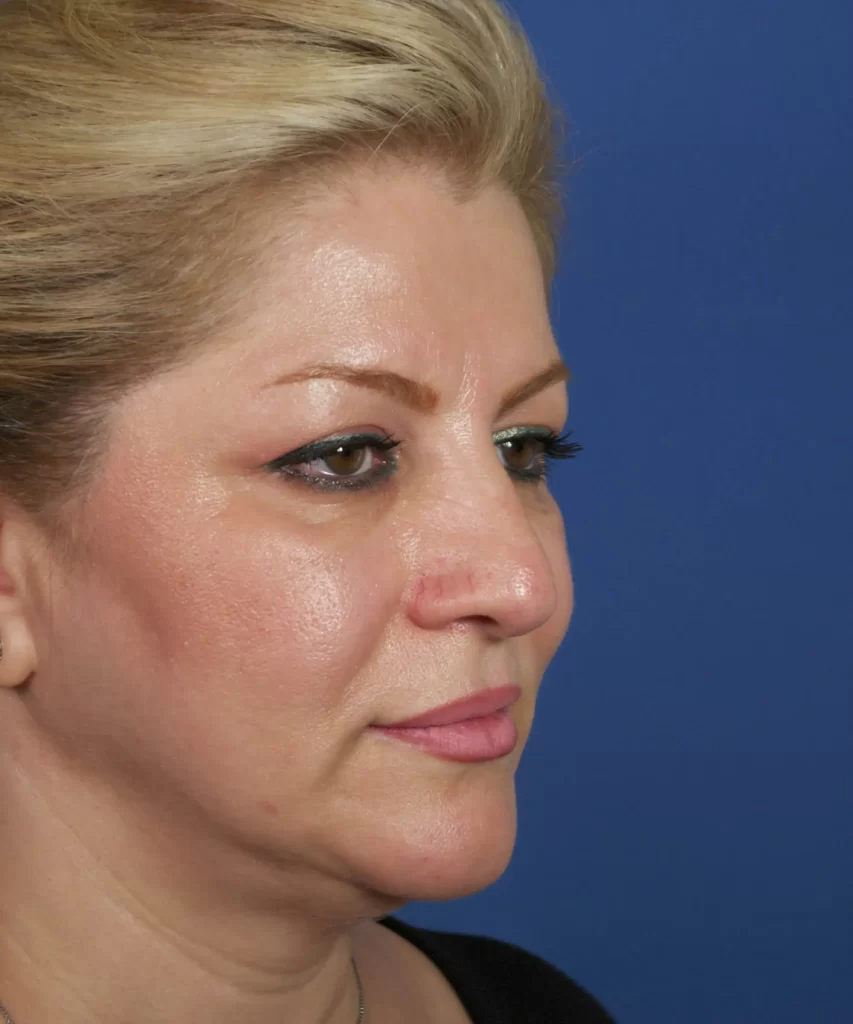
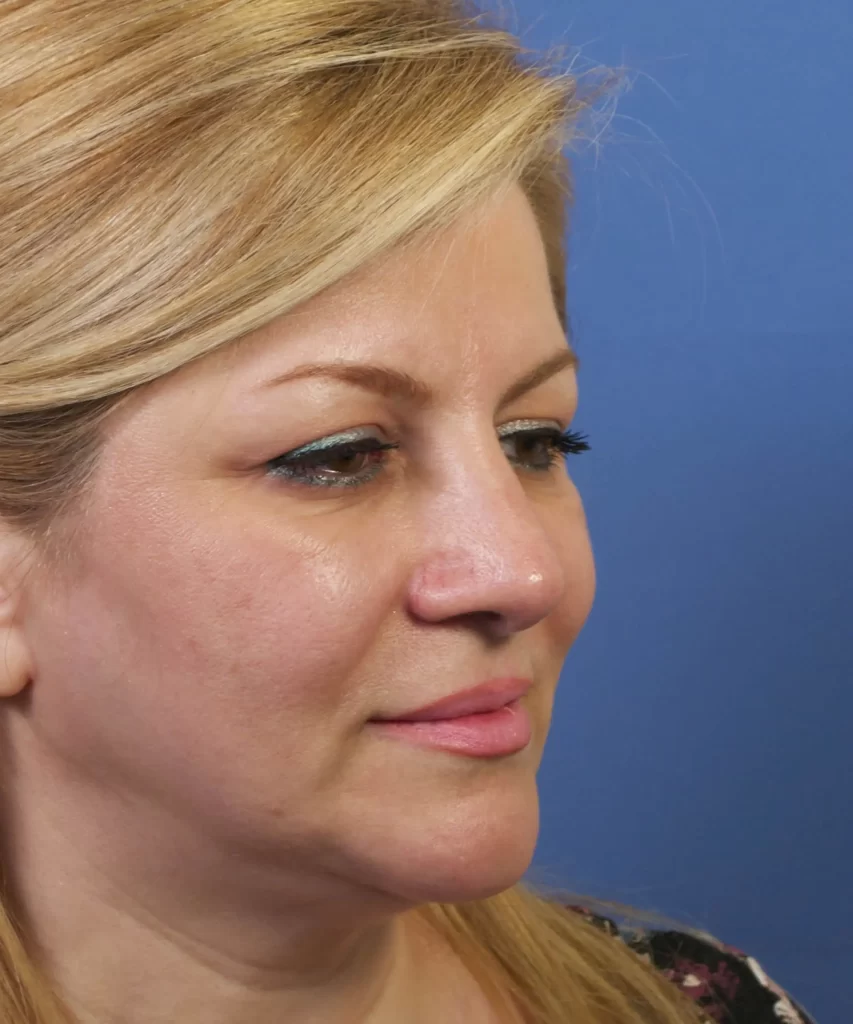
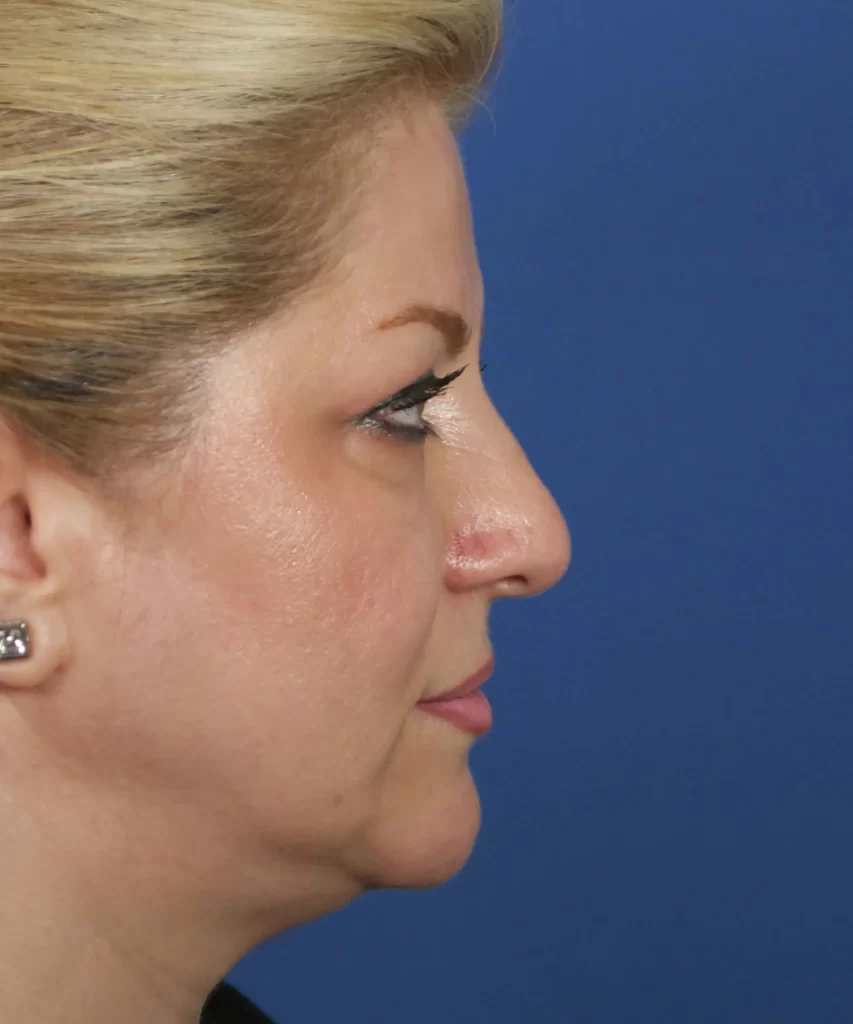
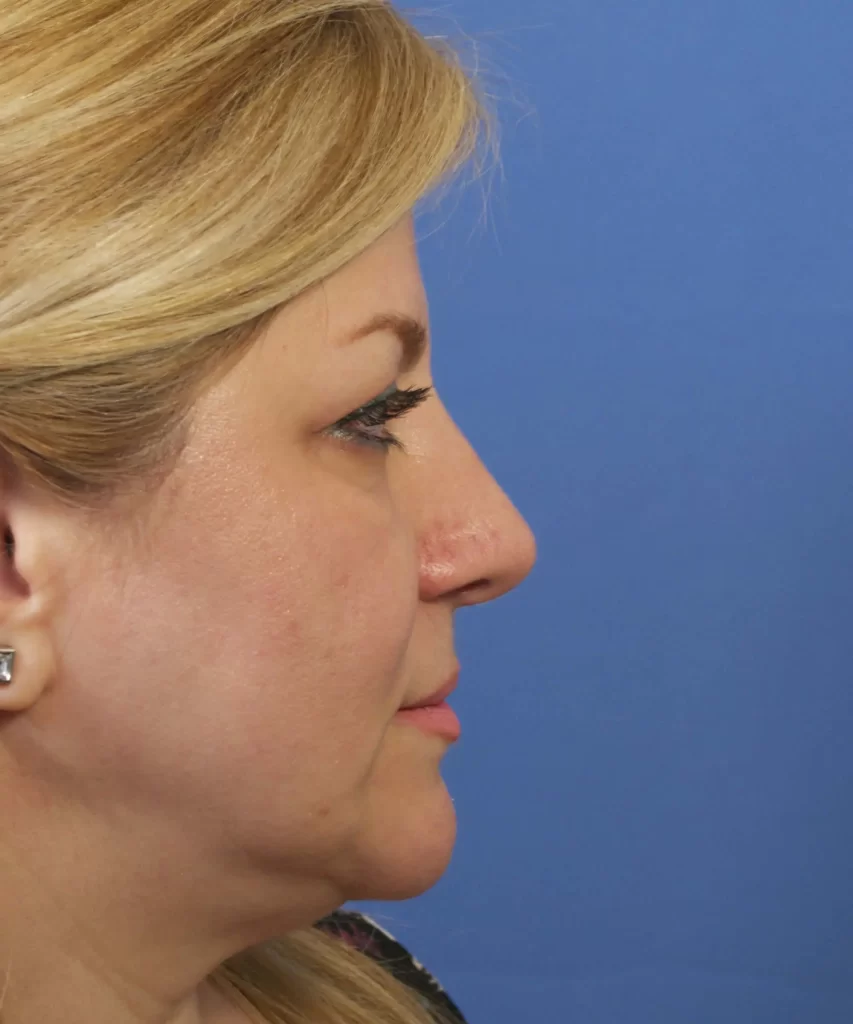
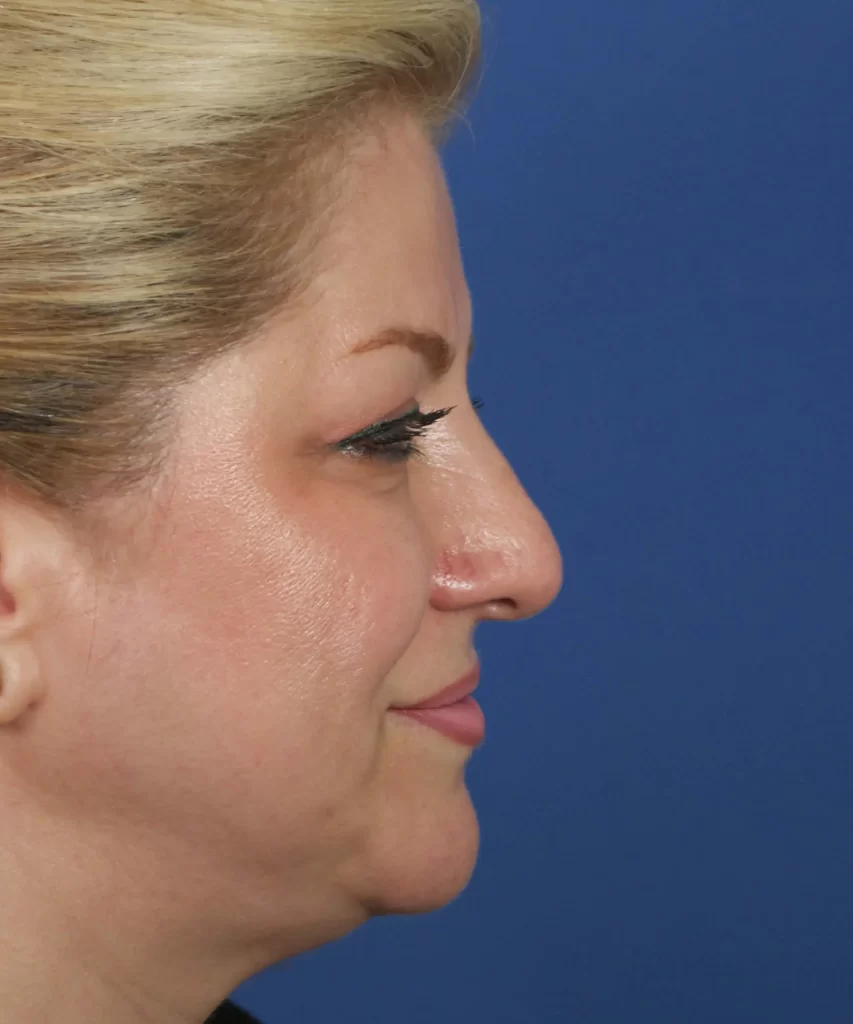
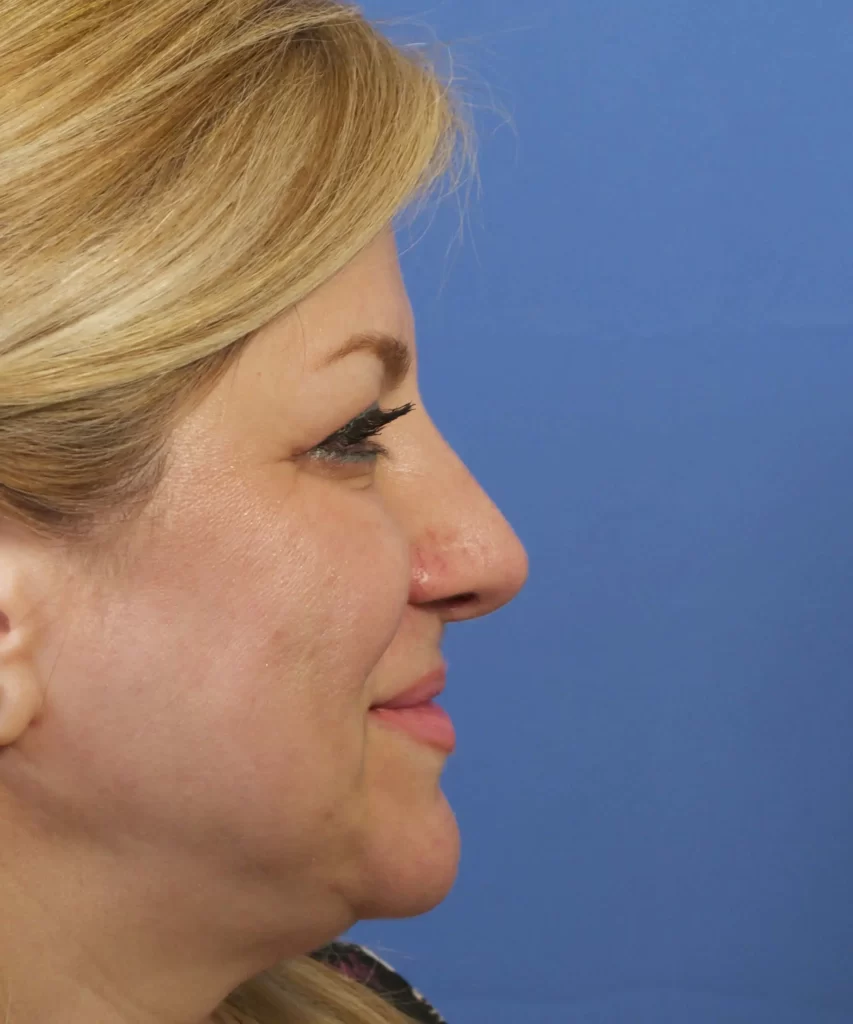
Persian (Iranian) Rhinoplasty Consult
If you are considering cosmetic nose job surgery and have a Persian (Iranian) background, feel free to contact my office today to schedule a personalized consultation to determine if you are a good candidate to undergo Persian (Iranian) rhinoplasty surgery.
